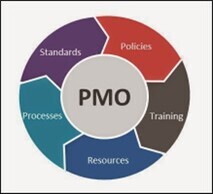At Edge Communications we have a specialist team that implements ICT projects for clients. At times these can be challenging, but that’s what we love about our role!
We have made some general observations about Project and Programme Management, that we would like to share with you. In our role we get to experience first-hand the value of good process, communication, and project governance.
We notice varying levels of project and programme management maturity amongst our clients.
Some of warning signs of process and governance problems look like these:
Projects are often delivered late – missed go-live deadlines
Projects cost more than expected – budget blow outs.
Limited or no reporting or visibility on project status or expected completion
Projects are not managed, partially managed or self-managed by the project team tagged or tasked as resources to deliver function aspects of the project
Project and Programme Governance is limited. There is no formal structured oversight of the projects to ensure they meet key project goals of time, cost, and quality
IT receives project briefs (or just ”demands”) from the business with little notice, but high expectations of delivery from the ICT team
Regular underestimation of the real cost, time and resources needed to deliver projects.
There is no formal sign off from business units on Business sponsor, budget, or project goals – resulting in false expectations and frustrations with the final project deliverable(s)
No individual is tasked with regular managing the resource needed to run both the day-to-day BAU operational aspects of the organisation, with projects on top of this – resulting in under resourced projects due to confused staff priorities
As a team we have discussed these observations and reflected on our own work practices. As a consultancy, every piece of work we do is considered a ‘project’ and to manage these we have tools, culture, and processes to help our clients ‘get stuff done’. We’re not preaching a “holier than thou”, just that we have to meet commercial imperatives and that forces a practical PMO rigour on us.
If you are implementing a new Project Management Office (PMO) for your organisation or reviewing your current PMO you may wish to consider some practical points ensuring your PMO is fit for purpose for your organisation and sustainable.
There are many factors to consider when implementing a PMO.
Who should the PMO support?
How big should it be?
How complex should the processes be?
What are the basics I need to cover?
There are no ‘one size fits all’ answers, but each factor should consider what is right for your organisation and provide best value for the business.
Structure
A PMO may cover all areas of the organisation or only serve areas where it can provide most value. This could be individual or a group of business units or departments. The PMO may support a single portfolio or various portfolios across the organisation. Choosing which structure is right will depend on the structure of the organisation and the project/programme and portfolios which are within those areas.
Another question to consider is what services the PMO offer.
A directive PMO typically has the Project Managers sitting within the PMO and allocates Project Management resource out to various business unit. This Project Management is centrally controlled by the PMO manager.
A controlling PMO will use a matrix structure where the Project Managers sit within the business units but have a strong link to the PMO. The PMO expect project teams to meet compliance standards and use standard project management frameworks, tools, templates, processes, and systems.
A supportive PMO focuses on support and admin for projects and may collate reporting and updates.
Size of a PMO?
There are no industry standards for a PMO size or percentage of an organisation’s budget. It is an excellent idea that a PMO should start simple and add to the service offerings as the maturity of the PMO and project management across the business allows. Putting the basics in place first is critical and then processes, standards and tools can be added over time. There may be a few resources to start, and additional roles added as maturity increases.
Key success factors
There are a few elements that all PMO’s should put in place, regardless of their size and complexity.
Ensuring there is support from the organisation’s executive team.
Start simply and work from there
Get the right people in the right roles
Get the basics right
Ensure there is the right balance between control and support
Inspect and adapt as maturity increases
Measure and celebrate success
Edge Communications has assisted clients design and develop a workable PMO for their organisations. We are happy to assist with initial advice and suggestions all the way through to developing a implementing a fully function and sustainable PMO for your organisation. We have several very experienced project team members who can take the pragmatic approach we’ve mentioned.
If you would like a chat about your current PMO challenges or advice about implementing a PMO please call Kerry McFetridge.

